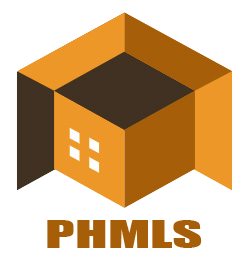PH house prices up 13% in Q3 -- BSP
Prices of residential real estate went up by 12.9 percent year-on-year as of the third quarter 2023 amid the continued expansion of housing loans across the country, according to the latest Residential Real Estate Price Index (RREPI) of the Bangko Sentral ng Pilipinas (BSP).
The RREPI, which is a BSP tool to assess the real estate and credit market conditions in the Philippines, measures the average change in the prices of various types of housing units such as single-detached/attached houses, duplex housing units, townhouses, and condominium units.
On a quarterly basis, the nationwide residential property prices increased by 3.4 percent.
The growth in prices is lower however, compared to 14.1 percent year-on-year and 5.3 percent quarter-on-quarter reported in the second quarter 2023.
The BSP said that by area, residential property prices were up both in the National Capital Region (NCR) and in areas outside of the NCR.
Housing prices in the NCR increased by 12.3 percent year-on-year in the third quarter with prices of single-detached/attached houses, condominium units, and townhouses all on the rise. As for areas outside the NCR, prices grew by 14.3 percent.
Based on BSP data, prices of duplex housing units registered the highest year-on-year growth rate in the third quarter at 57.7 percent, followed by: single-detached/attached houses at 16.8 percent; townhouses at 9.3 percent; and condominium units at 8.3 percent.
On a quarter-on-quarter basis, prices of duplex housing units grew the fastest by 30.8 percent; condominium units by 15.6 percent; and single-detached/attached houses by 1.4 percent.
The RREPI is based on banks’ residential real estate loans (RRELs).
The total number of RRELs granted in the Philippines went up by six percent year-on-year, driven by the 15 percent growth in areas outside of the NCR which outweighed the 9.3 percent contraction in the NCR.
In the third quarter, RRELs declined by 1.8 percent year-on-year. The BSP noted that housing loans in the NCR contracted by 11.9 percent, which outweighed the 5.1 percent growth in areas outside of the NCR.
By contrast, nationwide housing loan availments grew by 18 percent quarter-on-quarter due to the 31.9 percent and 11.3 percent increase in the number of RRELs in the NCR and in areas outside of the NCR.
About 76.2 percent of RREL transactions in the third quarter were used to buy new housing units. The BSP said 48.2 percent of the loans were used to purchase single-detached/attached houses, followed by condominium units with 36.3 percent and townhouses with 15 percent.
Most of the RRELs in the NCR were for the purchase of condominium units, while RRELs granted in areas outside of the NCR were for single-detached/attached houses.
By region, 31.8 percent of the total number of RRELs were for NCR borrowers. The rest were divided as: CALABARZON (32.2 percent); Central Luzon (12.3 percent); Western Visayas (6.1 percent); Central Visayas (5.8 percent); Davao Region (3.4 percent); and Cagayan Region (2 percent).
“The said regions, including the NCR, comprised 93.6 percent of the total housing loans granted by banks,” said the BSP.
The RREPI’s appraised value of new housing units averaged at P92,168 per square meter (sqm), which is nine percent higher year-on-year. It is also 17.5 percent higher quarter-on-quarter.
The NCR average appraised value per sqm rose 12.4 percent year-on-year to P156,530 sqm. This is also 22.4 percent higher quarter-on-quarter.
In areas outside of the NCR, the appraised value per sqm grew by 17.1 percent year-on-year to P55,202. Compared to the second quarter, it was up by 1.3 percent.
“It may be noted that the average appraised value of properties in the NCR is around 3 times higher than in AONCR,” said the BSP.
The central bank explained that the weight of each type of housing unit in the RREPI is determined by dividing the total floor area of a specific type of housing unit over the total floor area of all housing types.
In the third quarter 2023, single-detached/attached houses continued to constitute the largest weight in the RREPI at 52.6 percent, said the BSP.
As for condominium units, townhouses, and duplex housing units, these accounted for 25.5 percent, 21.3 percent, and 0.6 percent in the calculation of the RREPI, respectively, based on BSP data.
Source: https://mb.com.ph/2023/12/31/article-1655?fbclid=IwAR0_D1_qaCst-f5ruzhQAjuYMhCIbyPjTVsOR78yZl3xgg9i2sXRTt61bcc
Tags: Bangko Sentral ng Pilipinas (BSP) National Capital Region (NCR)










